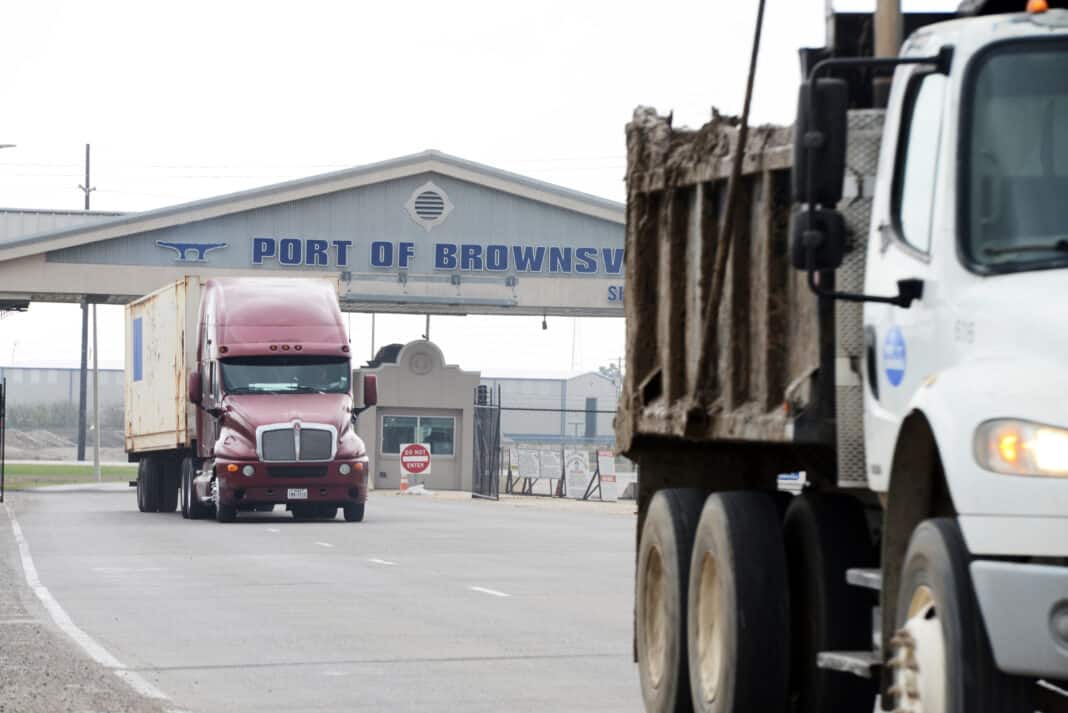
The Port of Brownsville managed to rack up a record-setting 2020 in terms of cargo movement and revenue despite the pandemic-induced global slowdown.
The Brownsville Navigation District, in its April 1 State of the Port report, announced that the port moved 11.2 million short tons of “diverse cargo” and had operating revenues of $41 million for fiscal year 2020, according to unaudited figures. The year’s operating revenues eclipsed those of $25.4 million for 2019, while the port saw 51,115 railcar movements in 2020, a 24 percent increase from 41,207 movements the previous fiscal year, according to the report.
The port is located within Foreign Trade Zone No. 62, ranked second last year among the nation’s 193 FTZs in terms of value of exports — $4.3 billion for 2020, another record. The value of imports rose to $4.6 billion, putting Brownsville 18th among FTZs nationally. FTZ No. 62 has been ranked in the top three for eight years in a row.
The port continued to make major infrastructure improvements in 2020 with the purchase of two new mobile harbor cranes to expand cargo-handling capacity, and the start of construction on the $25.6 million South Port Connector Road, which will provide another route between the port and Veterans International Bridge at Los Tomates and is the first phase of the planned East Loop Project.
The port last year also opened Liquid Cargo Dock No. 6, completed road enhancements and continued expanding cargo patios and “laydown yards” for the storage of equipment and materials.
“The port also resumed exporting grains via vessel shipping locally harvested sorghum to China, creating new international market opportunities for South Texas farming families,” according to the report. The resumption of grain exports led to a $14.5 million U.S Department of Transportation grant for improvements to railroad, road and ship-loading infrastructure at the bulk cargo dock to expand grain operations.
Also, port tenant Keppel AmFELS landed contracts to build the country’s largest hopper dredge and the first Jones Act-compliant offshore wind turbine installation vessel. The Jones Act, or Merchant Marine Act of 1920, was created to protect U.S. maritime interests and offshore workers. It requires that all vessels carrying goods between two U.S. ports be built, owned and flagged in the United States, and crewed by U.S. citizens or legal aliens. The port describes Keppel AmFELS as the “only major Jones Act shipbuilding yard in Texas.”

A new container-on-barge service launched in August connecting shippers and customers in the Rio Grande Valley and northern Mexico with Florida and the Southeast.
“Adding to the port’s 2020 record book were 21 wind energy projects, including the largest windmill blades ever imported to the U.S., at 250 feet long,” according to the report.
“The port never lost sight of its responsibility in serving as a global gateway for commerce and a critically important economic engine and job creator for our community,” said BND Chairman Sergio Tito Lopez. “Out tenants, customers and port staff performed with distinction during these difficult times, setting the pace for excellence in 2020.”




